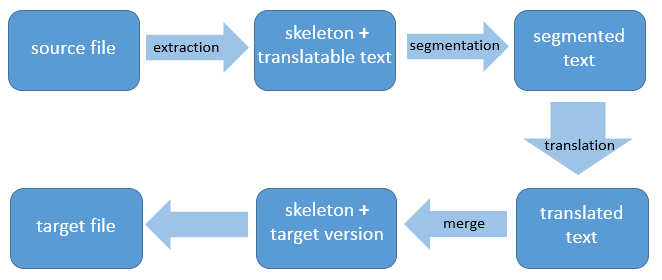
The Chaos Management Skills Assessment Series: A Test Translation Case Study Episode 3 – Translation Technology and Support to translators
by Steve Dept, cApStAn CEO
By now, readers of this informative series on good practice in test translation are aware that the Chaos Management Skills Assessment is a fictitious project, which we set up for the exclusive purpose of the series. The purpose is to illustrate the complexity of test translation and the added value of a robust linguistic quality assurance design. This is the 3rd out of 4 consecutive issues in this series, and it takes a closer look at the components of translation technology and the project manager’s role, including support to translators. In the technology-rich environment of computer-delivered testing, these components are essential, and they largely depend on the language service provider’s expertise in translation technology, who acts as an all-round project manager.
Our imaginary Chaos Management Skills Assessment (CMSA) measures competencies in consultants who assist companies in damage control situations. This is the second assessment cycle. In episode 1, we organised the retrieval of trend items from the previous cycle: our translation technologist created and leveraged translation memories to that effect. In episode 2, we performed a translatability assessment and drafted translation and adaptation notes. In this 3rd episode our translation technologist prepares the translation packages in a computer-assisted translation tool, or CAT tool, and provides adequate support to translators.
In this project, we were fortunate enough to have a face to face meeting involving the client’s platform engineer and our translation technologist. Together, we agreed to use tagged XML localisation interchange file format, or XLIFF, a widely used international standard. Support to translators includes preparing user-friendly files in which they can harness the power of mature translation technology, and providing them with clear instructions and a helpdesk.
In a test translation project, file preparation includes text extraction and segmentation. Extraction is about deciding what parts of the document are translatable and what parts are not. Non-translatable parts are locked or hidden by the translation technologist. These non-translatable parts could be elements that the respondent will not see; or placeholders that stand for graphical items, for example. Segmentation involves splitting the text into small, manageable parts (normally sentences). The less untranslatable content translators are exposed to, the less unnecessary work, and fewer chances for introducing errors.
The process is shown in the Figure below:

Several work setups were discussed with the platform engineers before consensus was reached: the initial requirements and constraints were agreed with the platform engineers, and the translation technologist agreed to take care of XLIFF file preparation. She also prepared the translation kit, which contained language assets such as a glossary and a style guide. Adherence to the glossary and style guide will be checked automatically (in the next episode).
As part of the support to translators, the project manager organised short, web-based training sessions that covered the specifics of localizing the CMSA instruments, and instructions for the use of the testing platform (for previews), the CAT tool and other translation technology. Hands-on exercises proved to be particularly effective. A ticketing system was set up to maximise the efficiency of the helpdesk, maintained by two translation technologists (who redirected the question to platform engineers as needed). In this project, each player did what s/he knew how to do best, and the final result was very satisfactory.
In the next episode, we shall describe linguistic quality assurance (LQA) routines that should take place after the translation process and before production stage. There is no high-quality test translation without a robust quality assurance design.
Meanwhile, if you’d like to learn about translation technology and support to translators, do fill the form below, and we’ll get back to you as soon as we can.